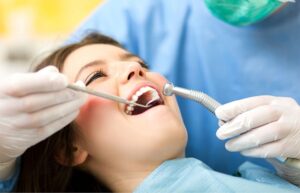There are three essential steps to oral hygiene – brushing, flossing and rinsing with mouthwash. If you perform them all regularly and visit your dentist every six months, you’ll be on the right track to good dental health.
The order you brush and floss can make a big difference in your oral health. In this article, we’ll discuss the ideal sequence for your dental regimen and how you can achieve it!
Brushing First
When it comes to your teeth, brushing and flossing are the foundation of a great oral hygiene routine. They help prevent cavities, gum disease and bad breath.
But there’s one thing about dental care that can sometimes be overlooked. It’s not as glamorous or instantly visible as your hair or makeup routine, but it’s just as important for your overall health and wellbeing.
That’s why it’s a good idea to spend at least four minutes in the morning on your oral hygiene regimen. Those few minutes will give you some extra time to remove plaque biofilm that accumulated while you were asleep, and it can also coat your teeth with a protective barrier against acids in your morning meal.
Flossing First
Flossing before brushing has been shown to have a few extra health benefits, including reducing the amount of plaque and raising the concentration of fluoride in the mouth.
Leaving flossing until after brushing can make you less likely to remember to do it and may also result in you rushing through it. Flossing first, on the other hand, ensures you’ll give it the time and attention it deserves.
Flossing also removes large particles of food stuck between teeth that toothbrush bristles can’t reach. This lets the toothpaste and fluoride in your toothpaste to penetrate more deeply, effectively removing bacteria and helping prevent gum disease and tooth decay.
Flossing Third
Flossing is a necessary part of oral hygiene and can help prevent gum disease. It removes plaque – the sticky thin film of bacteria that builds up on teeth, leading to gum disease, tooth decay, and painful trips to the dentist.
The American Dental Association (ADA) recommends flossing twice a day, in addition to brushing and visiting your dentist for a check-up. Dentists say that if you don’t floss regularly, you are increasing your risk for periodontal disease and other problems.
One reason many people skip flossing is because it can be uncomfortable or cause bleeding gums. If you find that you bleed after flossing, try a new type of floss or change the way you use your floss.
Flossing can also get food particles that are stuck between your teeth that can’t be reached with brushing. It also helps dislodge the bacteria that can lead to inflammation in your gums and a weakened immune system.





